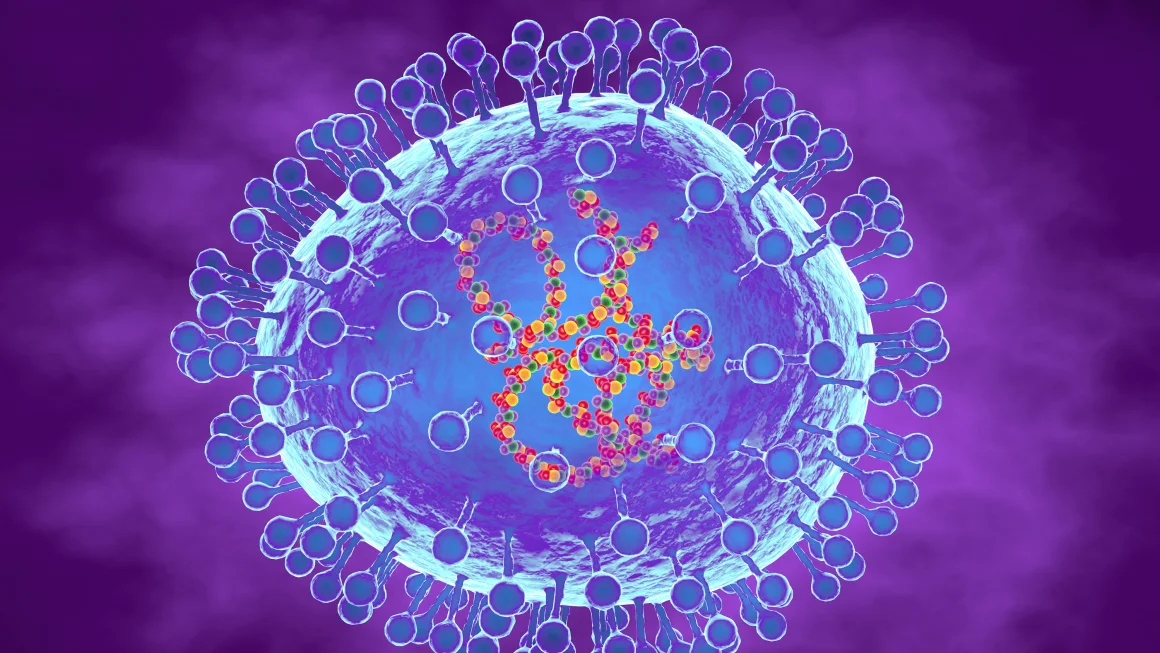- January 22, 2025
What is HMPV?

Key points
- Human metapneumovirus (HMPV) can cause respiratory disease.
- HMPV spreads from person to person or surfaces to person.
- Symptoms include cough, fever, nasal congestion, and shortness of breath.
- Your health care provider can test, however, there is no treatment.
- Prevention measures include hand washing, cleaning surfaces, and staying home when sick.
Overview
Human metapneumovirus (HMPV) can cause upper and lower respiratory disease in people of all ages, especially among young children, older adults, and people with weakened immune systems. Discovered in 2001, HMPV is in the Pneumoviridae family along with respiratory syncytial virus (RSV). Broader use of molecular diagnostic testing has increased identification and awareness of HMPV as an important cause of upper and lower respiratory infection.
Symptoms
Symptoms commonly associated with HMPV include cough, fever, nasal congestion, and shortness of breath. Clinical symptoms of HMPV infection may progress to bronchitis or pneumonia and are similar to other viruses that cause upper and lower respiratory infections. The estimated incubation period is 3 to 6 days, and the median duration of illness can vary depending upon severity but is similar to other respiratory infections caused by viruses.
How it spreads
HMPV is most likely spread from an infected person to others through
- secretions from coughing and sneezing
- close personal contact, such as touching or shaking hands
- touching objects or surfaces that have the viruses on them then touching the mouth, nose, or eyes
In the U.S., HMPV circulates in distinct annual seasons. HMPV circulation begins in winter and lasts until or through spring.
Surveillance and Seasonality
Surveillance data from CDC’s the National Respiratory and Enteric Virus Surveillance System (NREVSS) shows HMPV to be most active during late winter and spring in temperate climates. HMPV, RSV, and influenza can circulate simultaneously during the respiratory virus season.
Prevention
Patients can help prevent the spread of HMPV and other respiratory viruses by following these steps:
- Wash their hands often with soap and water for at least 20 seconds (see CDC’s Clean Hands Save Lives!).
- Avoid touching their eyes, nose, or mouth with unwashed hands.
- Avoid close contact with people who are sick.
Patients who have cold-like symptoms should
- cover their mouth and nose when coughing and sneezing
- wash their hands frequently and correctly (with soap and water for at least 20 seconds)
- avoid sharing their cups and eating utensils with others
- refrain from kissing others
- stay at home when they are sick
In addition, cleaning possible contaminated surfaces (such as doorknobs and shared toys) may potentially help stop the spread of HMPV.
Testing and diagnosis
Since HMPV is a recently recognized respiratory virus, healthcare professionals may not routinely consider or test for HMPV. However, healthcare professionals should consider HMPV testing during winter and spring, especially when HMPV is commonly circulating.
Infection with HMPV can be confirmed usually by
- direct detection of viral genome by nucleic acid amplification test (NAAT), and
- direct detection of viral antigens in respiratory secretions using immunofluorescence or enzyme immunoassay.
Treatment
Currently, there is no specific antiviral therapy to treat HMPV and no vaccine to prevent HMPV. Medical care is supportive.

